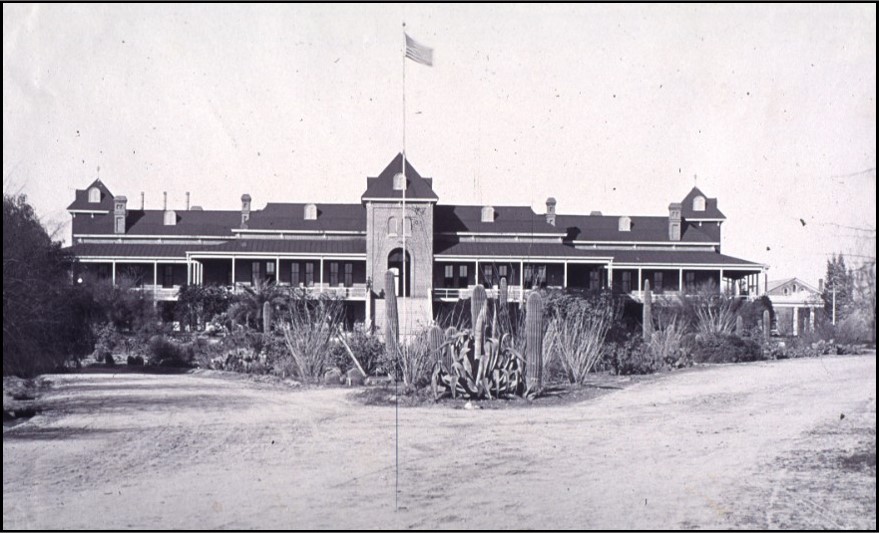 The Campus Arboretum is home to a large collection of plants from around the world. However, although plant species have come to the University of Arizona main campus from so many different geographic locations, they all share a common intent - to serve the University’s Land Grant mission of applying science to address state needs and solve state problems. In 1891, when The University of Arizona was established as the Land Grant School for the state, Prof. James Toumey, a botanist for the Agricultural Experiment Station set out to transform the campus grounds as an educational resource that conveyed to the community the value and beauty of plants adapted to desert climates. His efforts led to the development of gardens around University Hall, the building that we now call Old Main. He filled the landscape with hundreds of species of cacti and succulents with the goal of providing study material and an experience of desert landscapes. This garden was the first of many examples of campus landscapes designed with the intent of educating the public in desert horticulture.
The Campus Arboretum is home to a large collection of plants from around the world. However, although plant species have come to the University of Arizona main campus from so many different geographic locations, they all share a common intent - to serve the University’s Land Grant mission of applying science to address state needs and solve state problems. In 1891, when The University of Arizona was established as the Land Grant School for the state, Prof. James Toumey, a botanist for the Agricultural Experiment Station set out to transform the campus grounds as an educational resource that conveyed to the community the value and beauty of plants adapted to desert climates. His efforts led to the development of gardens around University Hall, the building that we now call Old Main. He filled the landscape with hundreds of species of cacti and succulents with the goal of providing study material and an experience of desert landscapes. This garden was the first of many examples of campus landscapes designed with the intent of educating the public in desert horticulture.
Today much of The University of Arizona main campus landscape reflects our history of testing desert adapted plants for their suitability in urban settings. These tests have assessed performance of native plants in urban settings, and drought-adapted introduced species. Collectively these efforts have produced an eclectic, diverse and beautiful botanical collection that supports research, education and outreach missions. These plants provide value to the community as, collectively, they form a magestic and beautiful public park, and they also serve as educational resources, and part of the city’s green infrastructure to regulate environment health, provide habitat to wildlife and myriad other community benefits. Since the Campus Arboretum's establishment in 2002, we have worked to perpetuate and promote the value of desert-adapted landscapes, by continuing this legacy of introducing new species, preserving heritage and educating the public.
True to the Land Grant Mission, We Continue A Legacy of Preserving University Heritage.
The living collection of campus trees also tells a story about the fluid, dynamic connections between university and community that should be a hallmark of all Land Grant Schools. The campus landscapes are built on the dedication of many individuals but ultimately, these trees transcend human time. They provide a legacy of environmental services and cultural heritage that benefit future generations and support environmental health in perpetuity.
Great thanks are owed to so many whose contribution to creating the campus landscape arcs across our 125-year history in the College of Agriculture and Life Sciences. In 2017, we recognize with gratitude the partnership between the UA Campus Arboretum and Mountain States Wholesale Nursery. Significant donations of specimen-quality plants from Mountain States Wholesale Nursery (MSWN) this year brought us full circle - back to the original site of Toumey’s cactus display garden at Old Main and to the Agriculture (Forbes) Buildings where Ron Gass, MSWN owner and Alumni of The School of Plant Sciences, has gifted plants to renovate landscapes at these historic, but previously neglected, sites.
Gratitude For Community Partnership.
Mountain States Wholesale Nursery (MSWN) has been in the business of selecting, producing and finding homes for thousands of native and arid-adapted cultivated and introduced plants for the past 47 years. Owners Ron and Maureen Gass, recognize that incorporating a greater variety of desert plants into landscapes is necessary to achieve more sustainable, beautiful and livable southwest cities. As climate changes and as water resources are constrained, we need to be resourceful in finding and utilizing plants that not only beautify our cities but which also provide the environmental services our cities need - services like shade, air filtration and reduced utility costs. To achieve this goal requires that we refine our knowledge of horticulture so we choose plants customized to the microclimates in our landscapes. There is "no one size fits all" solution when it comes to choosing the right plant for the right location. We need people with Ron’s expertise and lifelong commitment to horticulture to provide the knowledge and leadership needed.
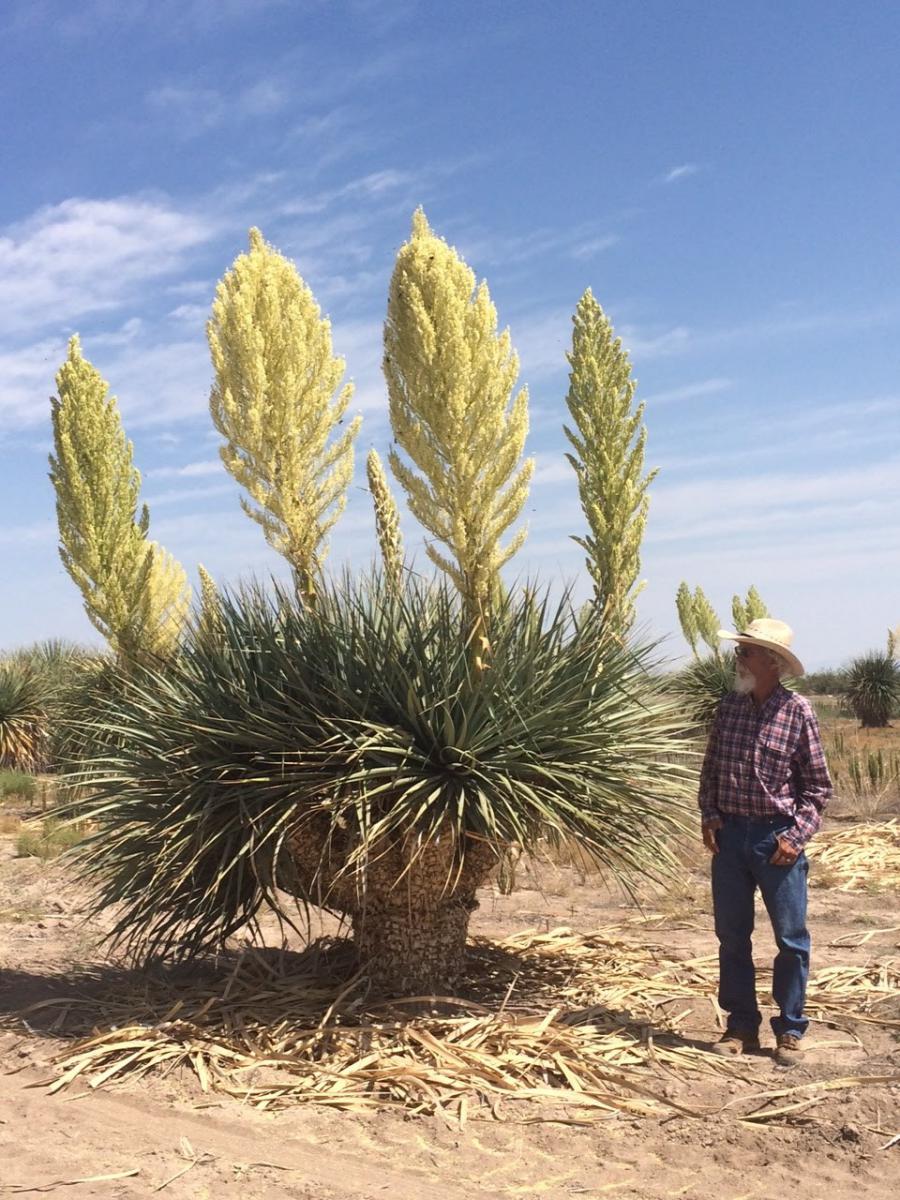 If you ask Ron Gass how his business started, he will tell you that he and his wife, Maureen, just love desert plants and started to collect them. Today MSWN has grown to offer a large inventory of 450 taxa of Sonoran-native and desert-adapted plants. They believe in sourcing their plants locally. As such, they produce plants in two locations, one in Phoenix, where plants suitable for hotter desert climate can be grown, and another location in Sulfur Springs Valley in Cochise County, where plants suited to higher elevation and colder desert climates are grown. Their mission is to provide desert-adapted plants and spread the spirit of the native landscape throughout Arizona.
If you ask Ron Gass how his business started, he will tell you that he and his wife, Maureen, just love desert plants and started to collect them. Today MSWN has grown to offer a large inventory of 450 taxa of Sonoran-native and desert-adapted plants. They believe in sourcing their plants locally. As such, they produce plants in two locations, one in Phoenix, where plants suitable for hotter desert climate can be grown, and another location in Sulfur Springs Valley in Cochise County, where plants suited to higher elevation and colder desert climates are grown. Their mission is to provide desert-adapted plants and spread the spirit of the native landscape throughout Arizona.
In January of this year, Mt. States Nursery donated dozens of specimen-scale desert adapted plants and we became the recipients of their commitment to excellence in sustainability. Some of the plant species donated included:
20 Yucca rostrata, 12 Nolina nelsonii, 10 Yucca grandiflora and 4 Yucca decipiens. These plants are all native to the dry climates of the Southwest or Mexico and are making their new homes near Old Main, Forbes, McClelland Hall and the Highland Commons.These species descriptions can be found online as follows: Nolina nelsonii, Yucca decipiens, Yucca rostrata, Yucca grandiflora.
In partnership with UA Campus Planning Design and Construction and Facilities Management Grounds Service departments, landscapes were redesigned so that these new plants could be integrated. The result is a stunning example of beauty and succession planning seamlessly blending old and new and ensuring the landscapes at these sites continue to provide benefits to campus and community long into the future. We extend our deep gratitude to Ron, Maureen and all those at Mountain States Wholesale Nursery for these truly exceptional specimens. They preserve and enhance the character, value and heritage of important campus sites.
Come experience the impact these new additions have on our campus landscape by visiting one of the planting sites. If you are interested in adding some desert plants to your own collection, try using the Mountain States Wholesale Nursery Plant Database to explore some of the possibilities!
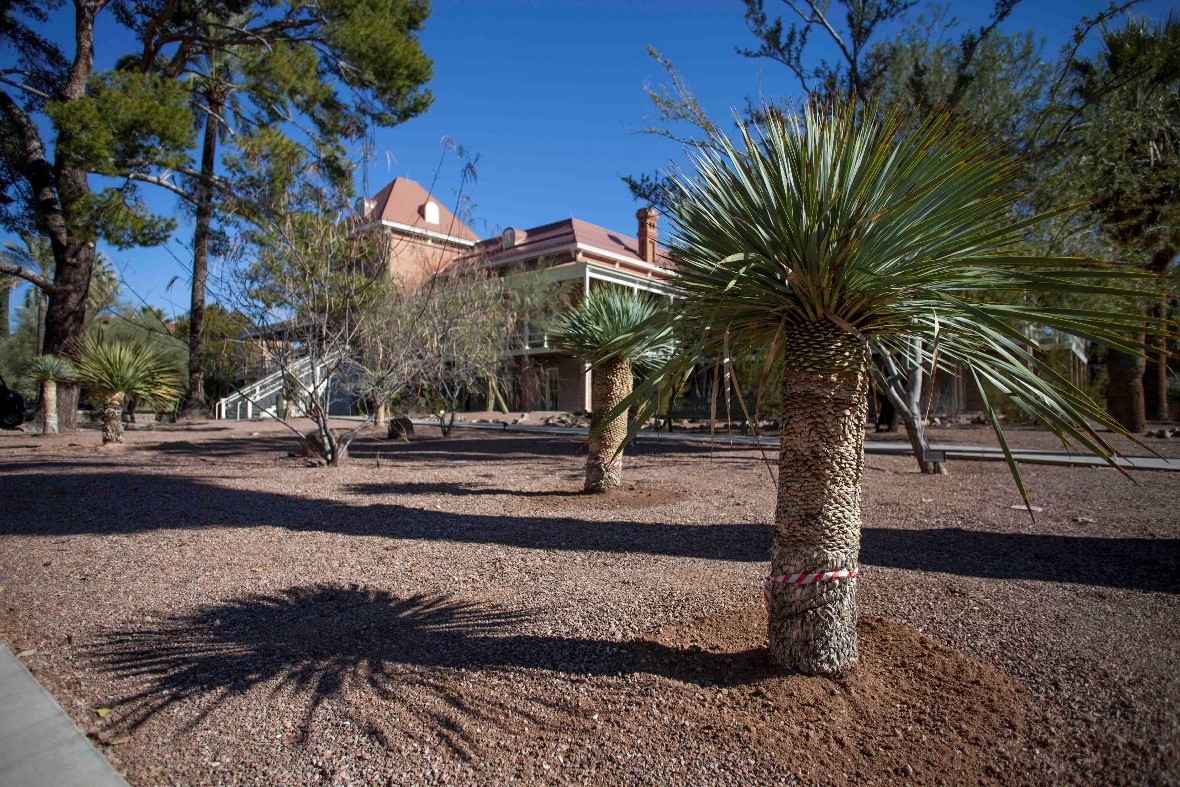
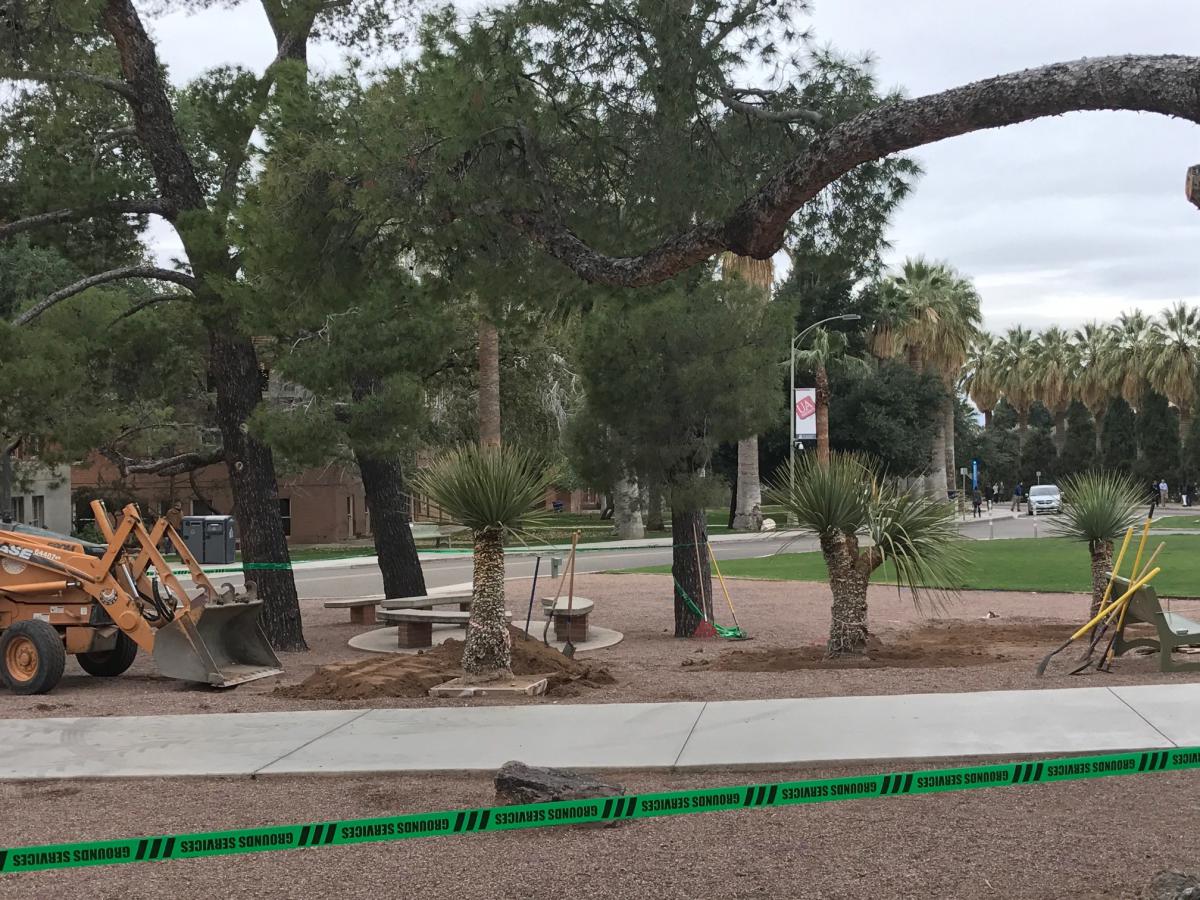
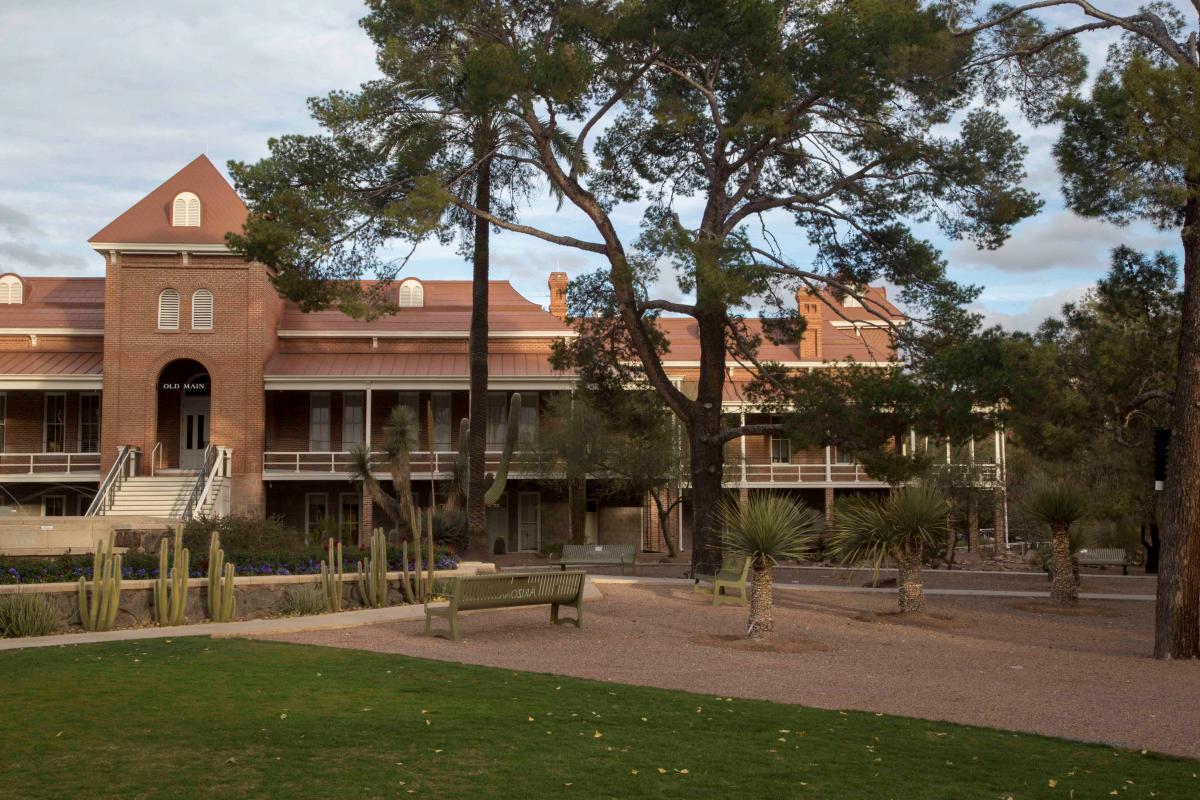

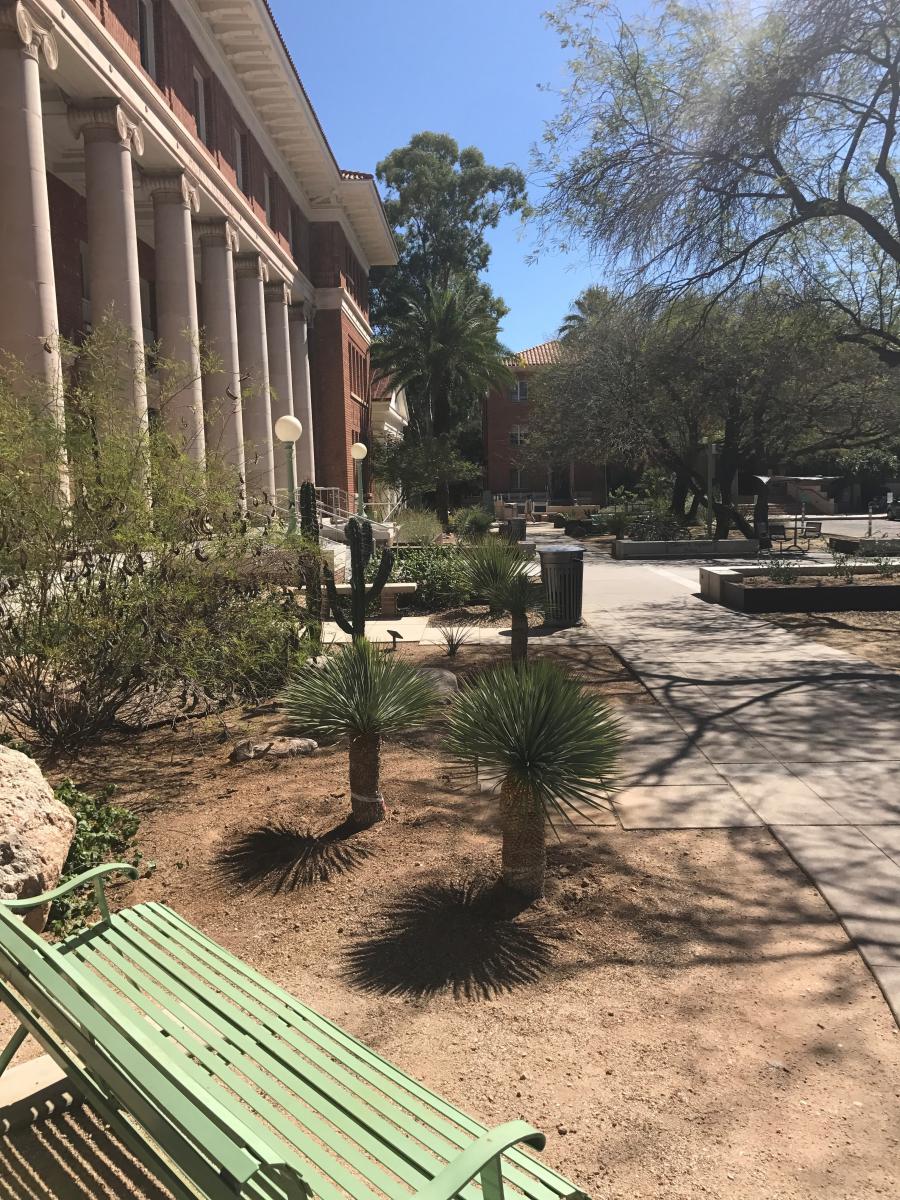
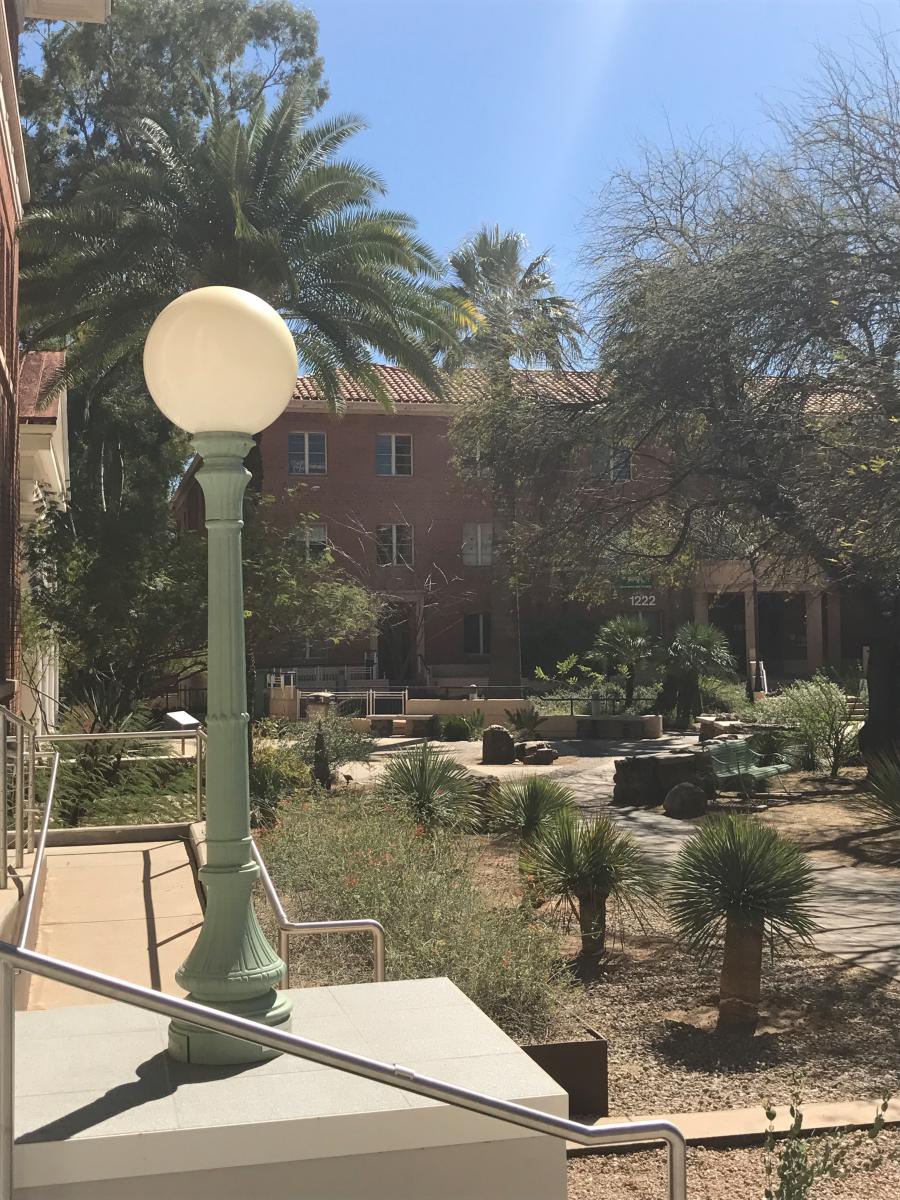
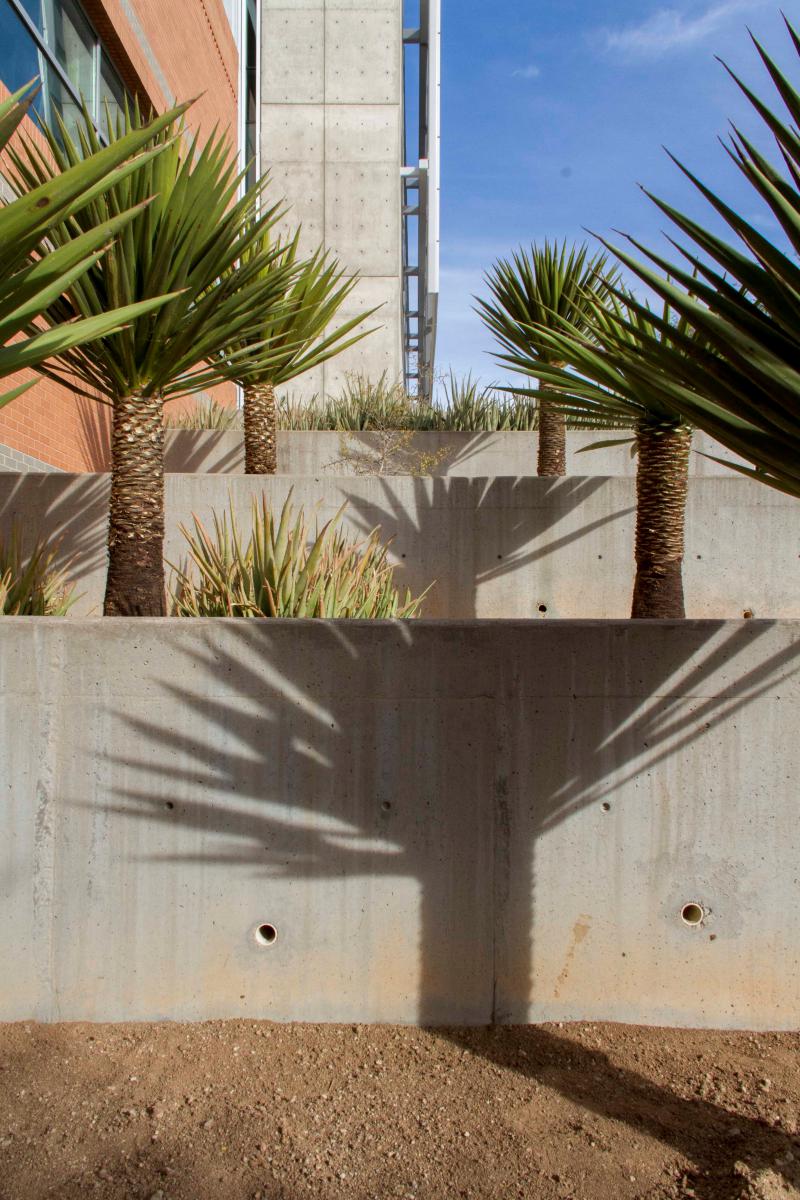
Photo Captions (top left to bottom right):
Forbes Building Entrance looking South over new Yucca rostrata plants.
Forbes Building Landscape view along the west face of the building.
Old Main west facing landscape flanking the Memorial Fountain.
Old Main installation of specimen Nolina nelsonii. Not shown are several Yucca decipiens.
Old Main installation complete looking northeast from the fountain at Nolina nelsonii.
Old Main Installation complete looking northwest from the fountain at Nolina nelsonii.
Eller Building showing the architectural form of 6 Yucca grandiflora in planters along the south stairs. Not shown are the additional 4 Yucca grandiflora planted along 6th Street south of Highland Commons.

